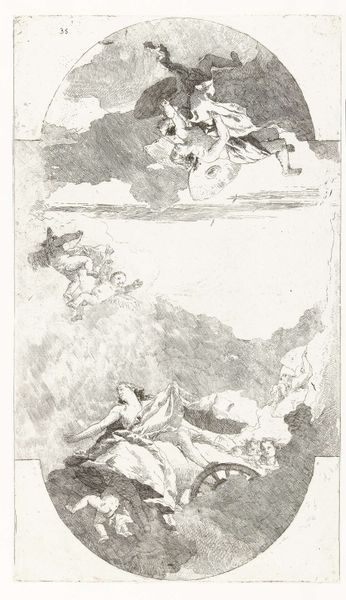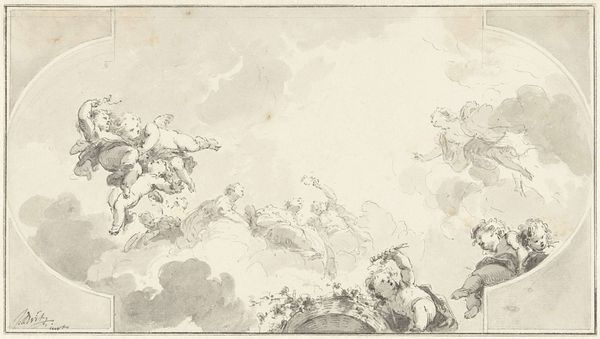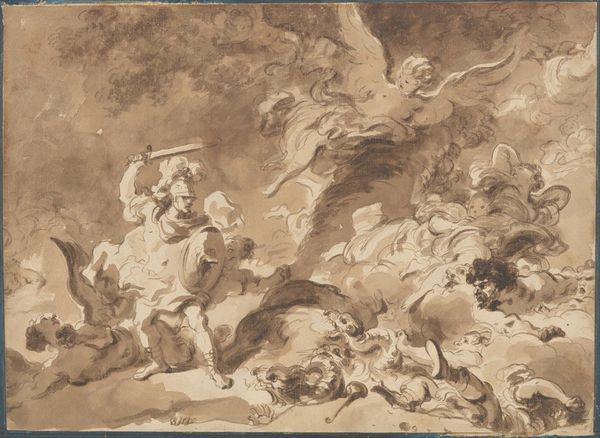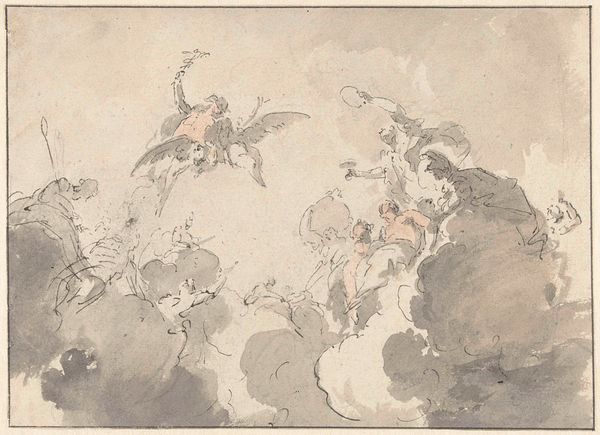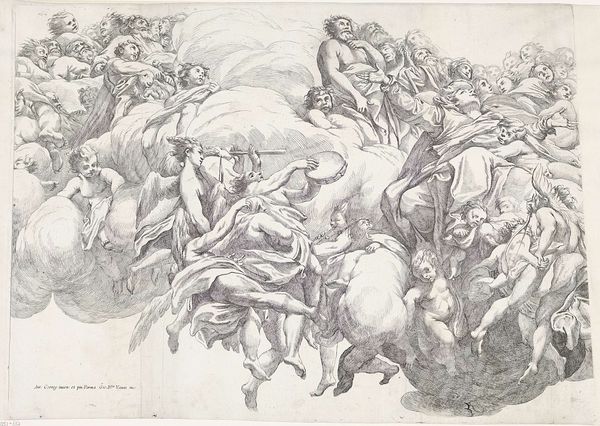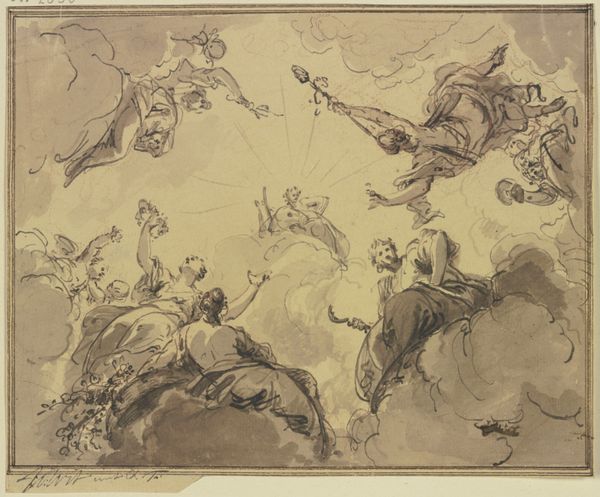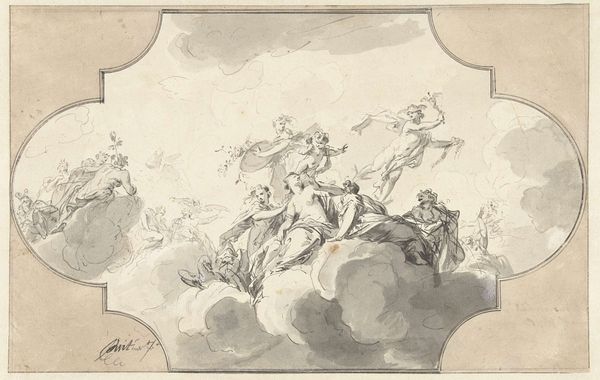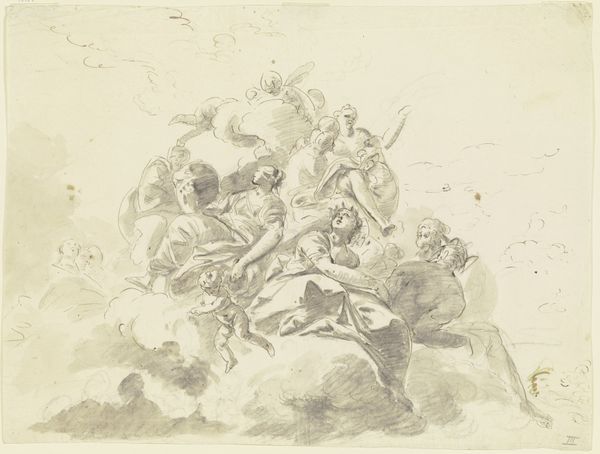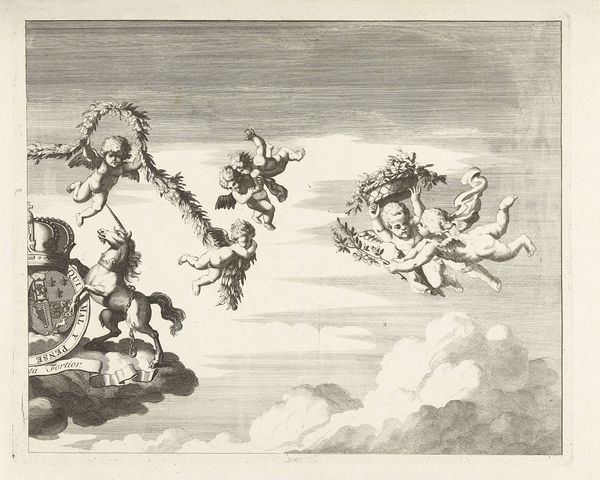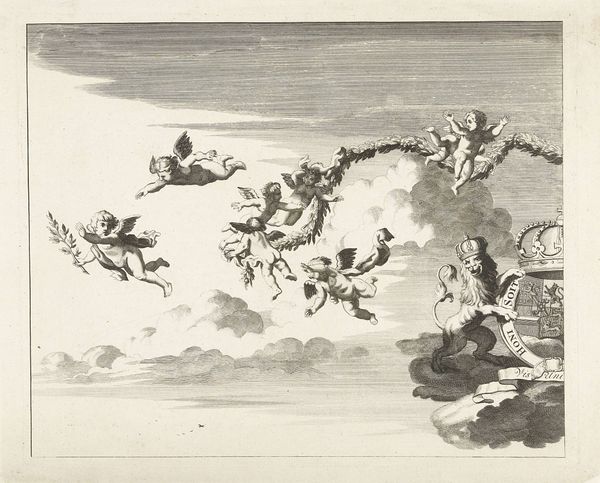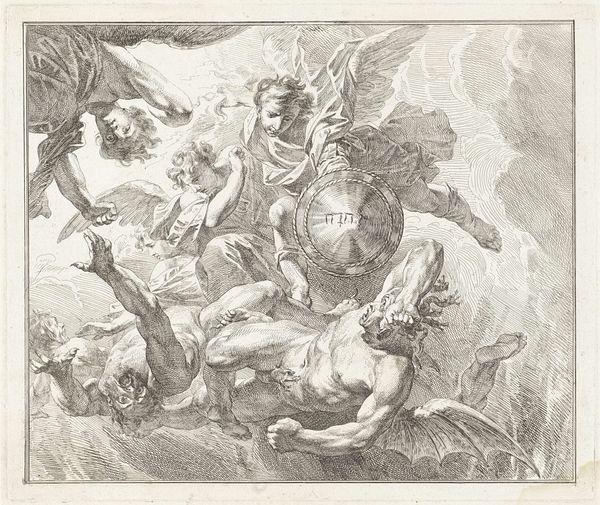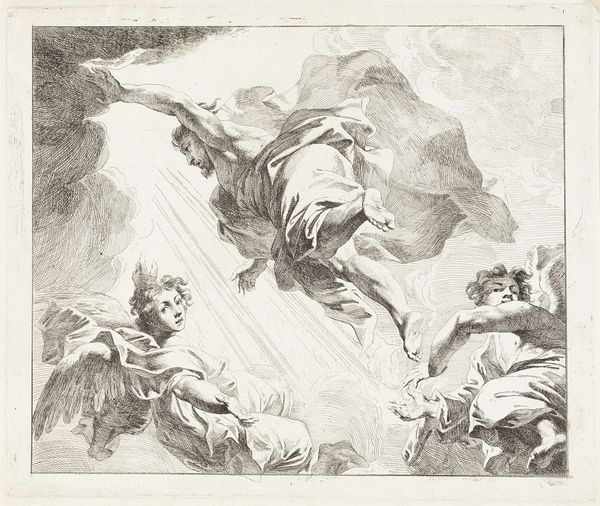
Dimensions: height 159 mm, width 286 mm
Copyright: Rijks Museum: Open Domain
This "Plafondontwerp met putti," or ceiling design with cherubs, was made by Bernhard Schreuder in the 18th century, using pen and brown ink, brush, and gray wash on paper. The appeal of this design lies in its masterful use of wash, a technique that involves diluting ink to create subtle tonal gradations. See how Schreuder uses the wash to create depth and volume, defining the forms of the putti and clouds. The controlled application of washes highlights the artist’s mastery of his materials, turning a simple sketch into a persuasive suggestion of the final ceiling’s appearance. This method, which was not only aesthetically pleasing but also cost-effective, allowed artists to pitch grand artistic visions to wealthy patrons. The careful labor involved in creating this design, with its complex arrangement of figures, underscores the importance of craftsmanship in the production of art and architecture during the 18th century. The sketch is not only a piece of art in itself, but also a reflection of the economic and social structures that supported artistic creation. By appreciating the materials, the making, and the context, we gain a fuller understanding of the artwork.
Comments
No comments
Be the first to comment and join the conversation on the ultimate creative platform.
